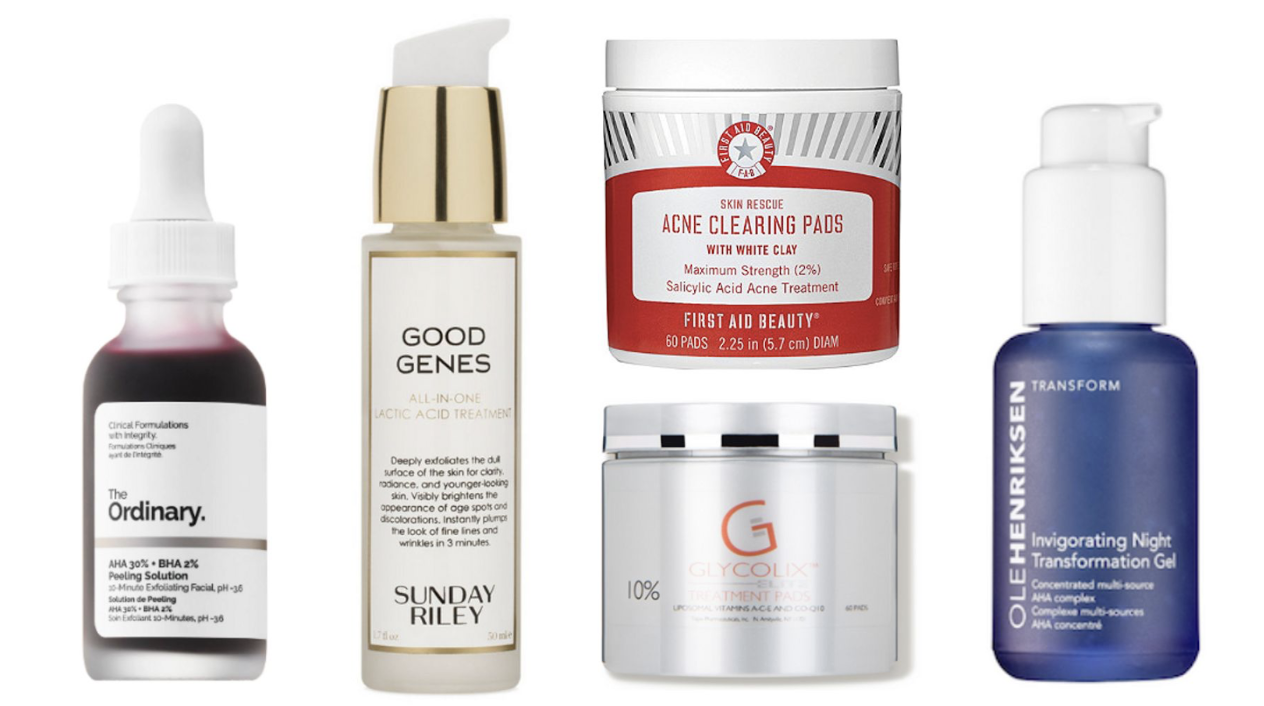
A skincare routine is one of the most important self-care practices to include in your daily life. By doing it both morning and night, skincare can have positive effects on your skin, giving you a bright, hydrated, and healthy glow.
Serums are an important step to add into your skincare routine, but with so many out there, it can be hard to narrow down which ones are for you, and how to properly layer them. It can also be difficult to figure out what should go into your routine, what steps to take, and in what order for the best results.
Below I’ll go over some of the best serums, how to layer them, and other products to include in your skincare routine.
What is a Face Serum for Skincare?
Facial serums a crucial step to add into any skincare routine.

Trying to find a face serum that fits your skincare needs and fits within your price point is crucial.
Serums are important to add into any skincare routine for many reasons. Some of them can help with dark spots on your face, others are great for anti-aging, or even if you have acne-prone skin. Knowing which serums to get can be tough, but learning the basics on what they are and what they are good for are a great first step.
Let’s understand a little bit more about serums and how they can change your skin.
What is the Point of a Facial Serum?
One of the first and foremost important factors to know about face serums is what they are. They are a lightweight formula serum that include one or of three active ingredients, hyaluronic acid, glycolic acid, or vitamin C, and have a higher concentration of them compared to a moisturizer.
There are many reasons to use facial serums and they can be used to target certain problems with your skin that you wish to treat. This could be anything from acne, wrinkles, dry skin, or even if you want brighter skin.
What Are the Most Common Types of Serums?
As we learned, there are different types of facial serums to help target different areas that you feel need to be treated when it comes to your skin. These all can easily be added into any skincare routine, but knowing which ones are for you is important.
Here are five of the most common types of serums to add into your skincare routine:
- Anti-aging serums
- Exfoliating serums
- Firming serums
- Hydrating serums
- Brightening serums
How Often Should Serums Be Applied?
Serums are usually applied to your face as a part of your skincare routine around one to two times per day, usually morning and night. Serums should gently be patted into your skin all over your face and your neck, and some can be applied to your chest too.
How to Layer Serums: Your Ultimate Guide
There is nothing more important than laying serums, but knowing how to do it is important to get the most out of them.

Facial serums are great to help out troublesome skin, but knowing how to layer them for the best results is essential.
Serums are a great layer of protectant to add onto your skin because of the benefits for troublesome issues that you can’t seem to resolve. They can help prevent wrinkles, brighten your skin, or even help if you suffer from severe cystic acne, but knowing how to properly layer them is the first step.
Apply to Freshly Cleansed Skin
One of the most important things to remember about skincare is that order is important. Making sure that you apply everything in the right order can help for total absorption and allow each product to work the best that it can.
Serums should always be applied to the skin after the face has been thoroughly cleansed. There are different ways to clean your face with the use of cleansers, which can be anything from acne cleansers, foam cleanser, gel cleanser, or whatever your preference may be. Once you wash your face with a cleanser of your choosing, thoroughly dry your face off by pat drying for the next step.
Toner is Always the Second Step
Another great product to use as a part of your skincare routine, especially after cleansing your face, is to use a toner. Toner helps to rejuvenate your skin and make it feel refreshed without stripping it of moisture.
This should be your next step in your skincare routine and you can use a cotton ball or cleaning pad to apply the toner and then swipe upwards on your face when applying it. Allow the toner to dry and absorb into your skin before the next step.
Finally, Serums Are Next
After you apply your toner and allow it to dry, your face serums are next. You may have multiple that you like to apply to your skin for different reasons, so it’s important to apply them from the thinnest consistency to the thickest.
It’s important to also allow each facial serum time to absorb into your skin before applying the next one. While it doesn’t seem long, it is recommended to wait several seconds before applying your next serum for the best results.
Moisturizer is the Last and Final Step
Moisturizer is one of the most important parts of your skincare process, but it’s crucial that you make it your last and final step. For facial serums, moisturizers help to lock the benefits in by hydrating and nourishing your skin. It helps all of the serums to work the best that they can and be absorbed better than they could without moisturizer.
There are many different kinds of moisturizers that you can get depending on if you have more dry, oily, or normal skin. There are three main types of moisturizers to consider for your skin that include:
- Humectants – Draws moisture to the top layer of your skin for ultimate hydration
- Emollients – Fill in the cracks in your skin to create a smooth and soft feel to your skin
- Occlusives – Create a thick barrier of moisture to lock in hydration (water)
How to Layers Serums and Acids
Face acids and serums have a ton of benefits, but knowing which one that you should add first is crucial!

Face acids are great products to use for acne prone skin, and to give your skin a younger and healthier glow.
While facial serums have become incredibly popular to apply to your face as a part of your skincare routine, it’s important to know how crucial acids may be too. Face acids can have a ton of benefits that can also coincide with serums to give you clear, younger, and beautiful skin.
What Are Acids?
If you haven’t heard of face acids, they can have a ton of benefits to help create younger and beautiful skin. They can help fight everything from acne, dark spots, wrinkles, scarring, and even help with uneven skin tone.
There are a few different options that you have for face acids to add to your skincare regimen:
- Salicylic acid – Best for acne prone skin
- Glycolic acid – Has anti-aging properties for younger skin
- Mandelic acid – An exfoliant acid great for preventing acne, sun damage, or even pigmentation
- Azelaic acid – Keeps skin clear by removing bacteria, reducing inflammation, and keeping pores clear
- Kojic acid – A popular Asian skincare product for whitening and anti-aging
Face Acids Always Come Before Serums
When applying serums and acids to your face, you may be wondering which one comes first. Face acids should always come first. For example, hyaluronic acid is very popular to use for acne and it should be applied first before any of your serums.
Retinol is another acid to use and it should be applied first before any serums simply because acids need to be on a dry face. Adding multiple layers of serums can make it harder for acids to lock in place and absorb into your skin properly.
Skincare is an important thing to add into your daily life, both morning and night. While your routine may be different depending on what time of day it is, serums are best applied at night after cleaning and toning, but before moisturizing.
Consider adding a facial serum to your daily skincare regimen to make your skin brighter, youthful, and gorgeous!
I hope this information helps you have happy, healthy, glowing skin all year long!
Thank you to Aiken House for sponsoring this post.

![I love you like a… [swipe] 🧁
LMK if you want to see the full fit. (It was pretty 🔥 if I do say so myself.)
#chiefofstyle #plussizefashion #latenight #morelife](https://chiefofstyle.com/wp-content/plugins/instagram-feed/img/placeholder.png)